 |
Toshiba 6 TP-385 Japan - 1960 |
 |
 English
English |
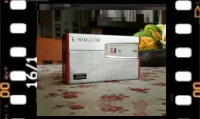 |
Italiano  |
|||
|
|
|||||
 |
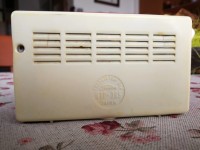 |
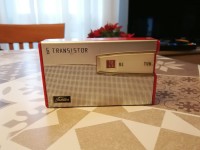 |
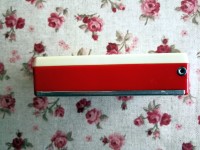 |
||
 Toshiba Corporation
mod.
6 TP-385 - Serial number: 60385
- Tokyo, Japan -
1960.
Toshiba Corporation
mod.
6 TP-385 - Serial number: 60385
- Tokyo, Japan -
1960.Small portable radio with Medium Wave reception, the circuit was of the superheterodyne type with 6 germanium transistors and one diode: 2SA73, 2SA49, 2SA53, 2SB54, 2SB56, 2SB56 and 1N60. The Toshiba used three stages at Intermediate Frequency which resonated at 455kHz. The antenna was wound around a flat ferrite core, but a threaded bushing was provided on top of the cabinet into which a whip antenna could be screwed to implement the signal. The cabinet was made of plastic with a perforated and satin-finish aluminum grille on the front on which a small window was obtained through which was possible read the broadcast frequencies to be multiplied by 100 to obtain the kHz. In addition to the broadcastings, on the tiny dial scale were marked with small triangles the two Conelrad nuclear attack warning system frequencies, used in the United States during the Cold War. More information is available on the Conelrad page. The power + volume and tuning knobs were located on the right side of the cabinet, while on the left there was the socket for the earphone. Receiver power was supplied by a 6F22 type 9V battery. The dimensions were: 4.3 x 2.6 x 1.1 inch (W,H,D). The example of the small radio more than sixty years old that came into my possession was not working, but to restore it it was sufficient to replace the four electrolytic capacitors (C5, C11, C12 and C16) and redo the alignment of the three IF trasformers at 455 kHz. © IK3HIA, 2023. |
|||||
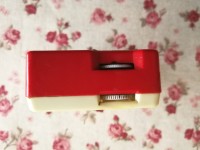 |
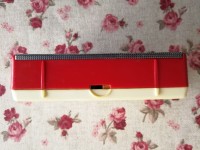 |
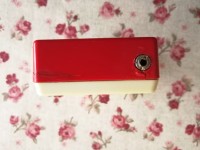 |
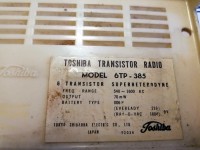 |
||
 Toshiba
Corporation
mod.
6 TP-385
- Numero seriale: 60385 - Tokyo, Giappone -
1960.
Toshiba
Corporation
mod.
6 TP-385
- Numero seriale: 60385 - Tokyo, Giappone -
1960.Radio portatile di piccole dimensioni con ricezione delle Onde Medie, il circuito era del tipo supereterodina con 6 transistor al germanio e un diodo: 2SA73, 2SA49, 2SA53, 2SB54, 2SB56, 2SB56 e 1N60. La Toshiba utilizzava tre stadi a Frequenza Intermedia che risuonavano a 455 kHz. L'antenna era avvolta su un nucleo di ferrite piatto, ma sulla parte superiore del mobiletto era prevista una boccola filettata su cui si poteva avvitare un'antenna a stilo per implementare il segnale. Il mobile era di plastica con griglia di alluminio forata e satinata sul davanti sulla quale era ricavata una finestrella attraverso la quale si poteva leggere la frequenza da moltiplicare x 100 per ottenere i kHz. Oltre alle frequenze delle stazioni radio, sulla minuscola scala parlante erano contrassegnate con dei triangolini le due frequenze del sistema d'allarme Conelrad per attacco nucleare, utilizzato negli Stati Uniti durante la Guerra Fredda. Maggiori informazioni sono disponibili nella pagina Conelrad. Le manopole di accensione, volume e di sintonia erano collocate sul lato destro del mobiletto, mentre sul sinistro c'era la presa per l'auricolare. L'alimentazione del ricevitore era fornita da una batteria da 9V tipo 6F22. Le dimensioni erano: 11 x 6,5 x 2,8 cm (L,A,P). L'esemplare della piccola radio vecchia più di sessant'anni pervenuto in mio possesso non era funzionante, ma per restaurarla è stato sufficiente sostituire i quattro condensatori elettrolitici (C5, C11, C12 e C16) e rifare l'allineamento dei tre trasformatori di FI a 455 kHz. © IK3HIA, 2023. |
|||||
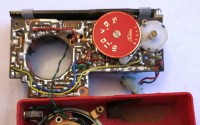 |
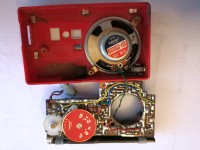 |
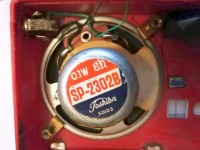 |
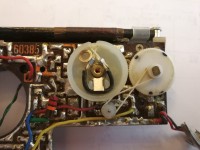 |
||
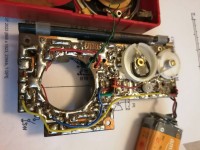 |
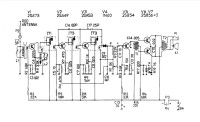 |
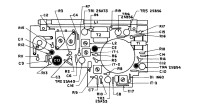 |
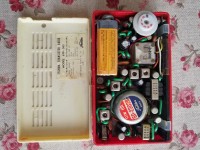 |
||
|
Return to top of
page
|
|||||
|
|
Return to: IK3HIA home page |
|
Return to: Transistor Radio |
|
Go to: Transistor diagrams |